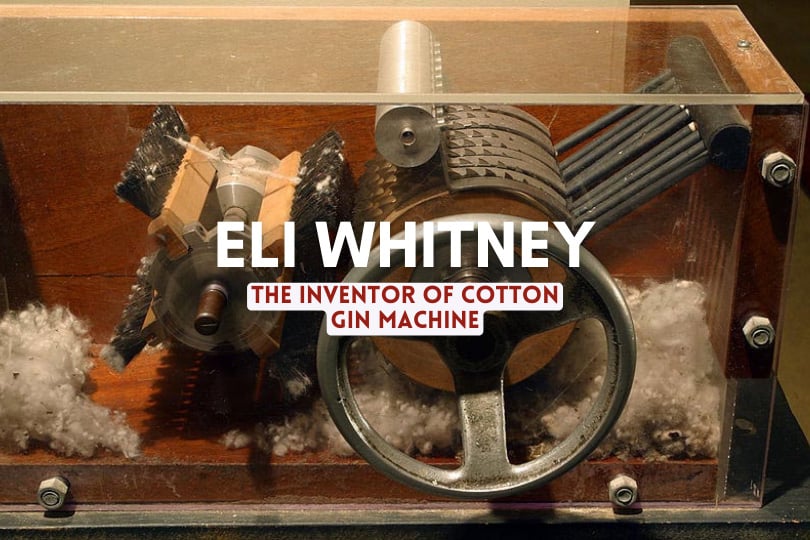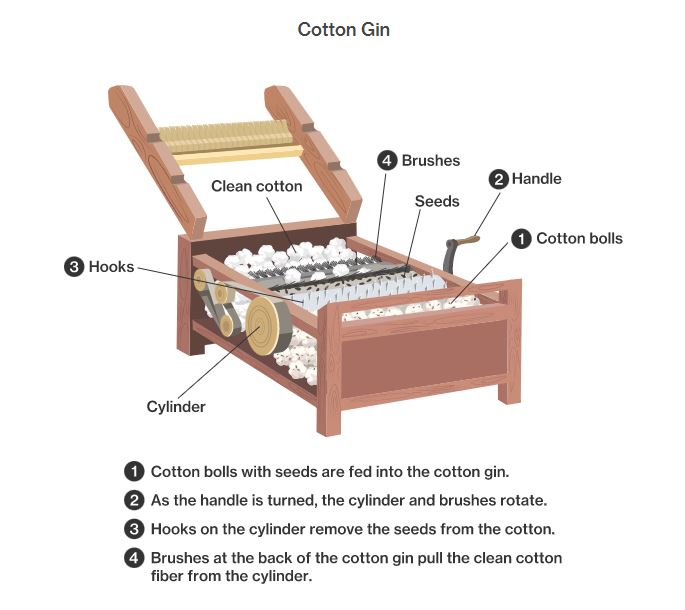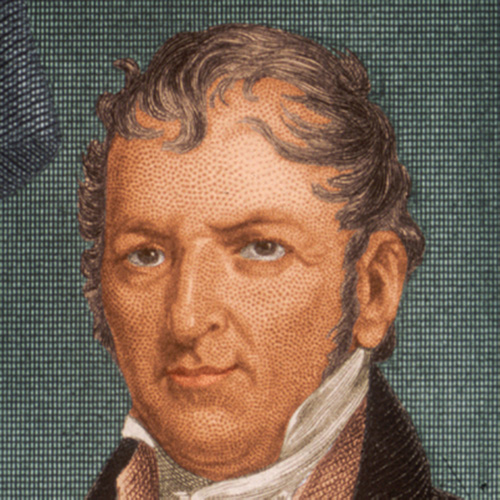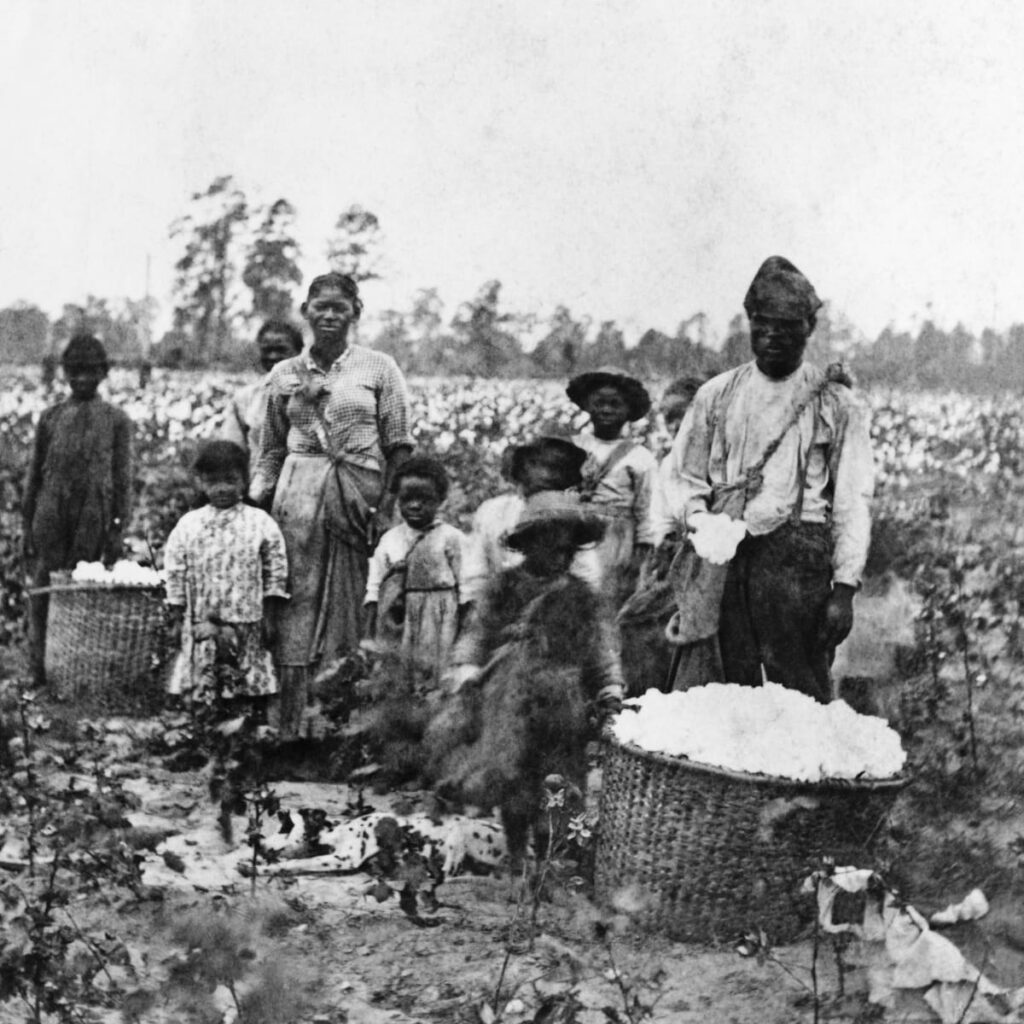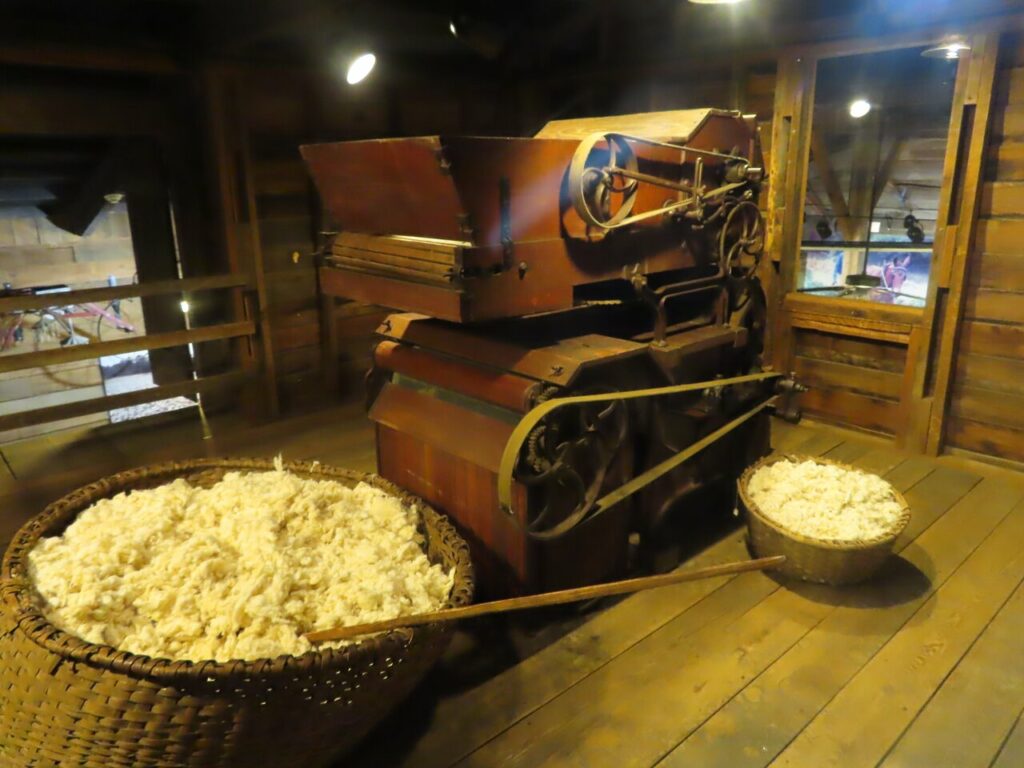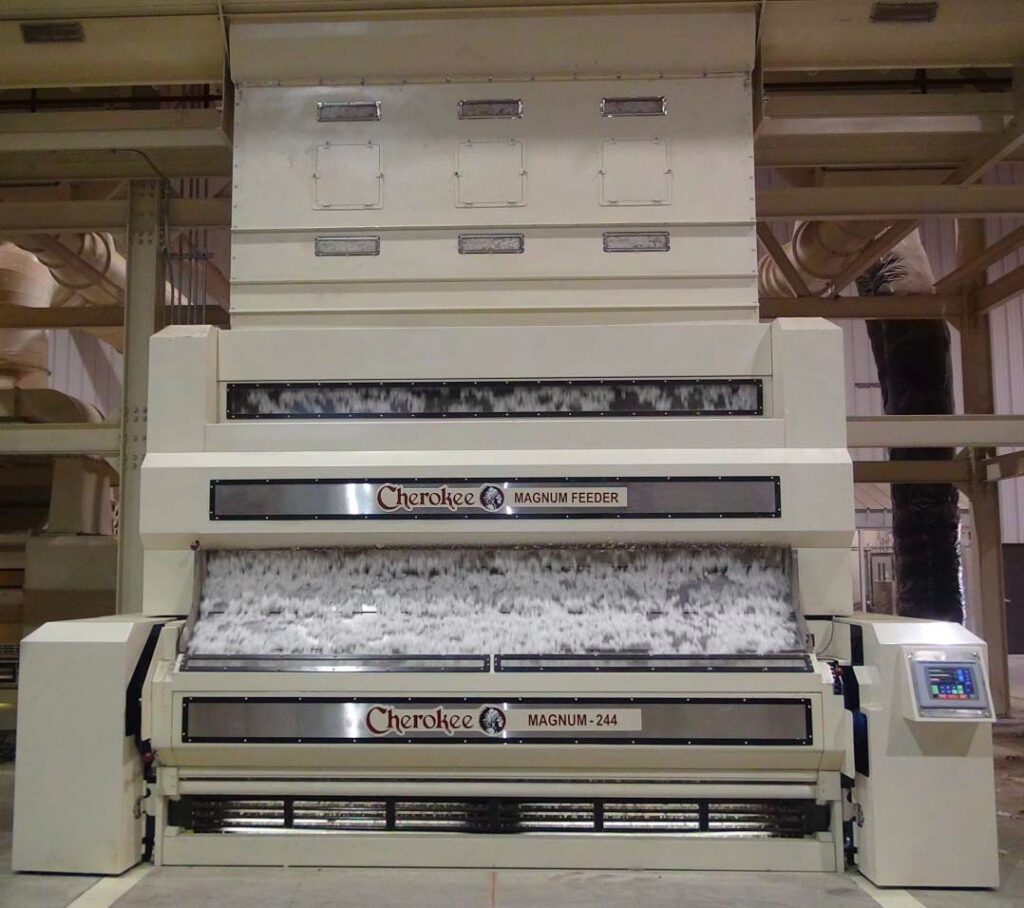Those of you who work in the textile industry may already be familiar with the name Gin machine or cotton gin. However, there may still be many of you who are not familiar with Ely Whitney, the inventor of the revolutionary cotton gin machine. This time we will discuss more this invention.
What Is A Gin Machine?
The Cotton Gin Machine is a machine specially designed to separate cotton fibers from seeds. Before this machine was invented the separation used a manual method which was quite long. These fibers are then processed into various cotton goods such as calico.
Good cotton is then selected to be made into textiles. Seeds that have been separated can be replanted to produce cotton or can also be used to produce cottonseed oil.
The Beginning of the Invention of the Gin Machine
One day, Eli Whitney visited a cotton plantation. At that time, he saw slaves working to clean cotton fibers from the seeds. Then he researched or came up with the idea to make a device that could separate cotton seeds to save time.
In 1794, US-born inventor Eli Whitney (1765-1825) patented the cotton gin, a machine that revolutionized cotton production by greatly speeding up the process of removing seeds from cotton fibers. By the mid-19th century, cotton had become a major American export. Despite its success, the gin made little money for Whitney due to patent infringement issues.
How the Cotton Gin Machine Works
The working of Eli Whitney’s cotton gin machine is quite simple. In the machine, there was a barrel covered with rows of thin wires. When the barrels were rotated, the cotton fibers would be pulled through the gaps of the sieve while the seeds would be left behind. A brush was attached to the rotating bar. This brush pulls the cotton out of the sieve. Leather straps kept the barrels and brushes rotating at the correct speed.
The invention of this machine justified the plantation owners in the South to maintain slavery. Although at that time many Americans refused and wanted to abolish slavery at that time. Whitney later secured a major contract in the manufacture of rifles for the US government.
Through this project, he promoted the idea of interchangeable parts – standardized identical parts made for faster assembly and easier repair of various devices. For his work, he is credited as a pioneer of American manufacturing.
Short Biography of Ely Whitney
Eli Whitney was born on December 8, 1765, in Westborough, Massachusetts. He grew up and was raised by a farmer. At a young age, he showed a talent for mechanics, some of the objects he designed during his youth included a nail forge and a violin.
In 1792, after graduating from Yale College (now Yale University), Whitney headed to the South. He initially planned to work as a private tutor but instead accepted an invitation to stay with Catherine Greene (1755-1814), widow of American Revolutionary War (1775-83) general Nathanael Greene, at her plantation, known as Mulberry Grove, near Savana, Georgia.
During his time there, Whitney learned about cotton production-specifically, the difficulties cotton farmers faced.
Some historians believe Catherine Greene designed the cotton gin machine and Eli Whitney simply built it and applied for a patent, as at the time women were not allowed to apply for patents. Others believe it was Whitney’s idea, but Greene played an important role as both designer and financier.
Problems of Cotton Farmers at the Time
In many ways, cotton is an ideal crop. This is because cotton is an easy crop to grow, and unlike other food crops, its fiber can be stored for long periods of time. However, cotton plants contain seeds that are difficult to separate from soft fibers.
The type of cotton known as long-staple is easy to clean, but only grows well along with coastal areas. Most cotton farmers are forced to grow the more labor-intensive short-staple cotton, which must be painstakingly cleaned by hand, one plant at a time.
The average cotton picker can remove seed from only about one pound of short-staple cotton per day.
A More Efficient Way
Greene and his plantation manager, Phineas Miller (1764-1803), explained the problem of short-staple cotton to Whitney, and soon after he built a machine that could effectively and efficiently remove seeds from cotton plants.
This invention came to be called the cotton gin (the word “gin” comes from “engine”). The machine worked like a sieve where the cotton was run through a wooden drum embedded with a series of hooks that caught the fibers and dragged them through a net. The mesh is too fine to let the seeds through, but the hooks pull the cotton fibers through with ease.
Smaller gins could be turned by hand; larger ones could be powered by horses and, later, by steam engines. Whitney’s hand-cranked machine could remove the seeds from 50 pounds of cotton in one day.
Modern Cotton Gin Machine
In modern cotton production, cotton arrives at the gin in trailers, in compressed rectangular “modules” weighing up to 10 metric tons each, or in polyethylene-wrapped round modules similar to the straw bales produced during the picking process by the latest generation of cotton pickers.
Trailer cotton (i.e. cotton that is not compressed into modules) arriving at the gin is siphoned through a pipe about 16 inches (41 cm) in diameter that is swung over the cotton. This pipe is usually operated manually but is increasingly being automated in modern cotton mills.
The need for trailers to transport products to the gin has been drastically reduced since the introduction of modules. If cotton is delivered in modules, the module feeder breaks up the modules using spiked rollers and extracts the largest pieces of foreign material from the cotton.
The loose cotton from the module feeder is then vacuumed to the same starting point as the trailer cotton.
The cotton then enters the dryer, which removes excess moisture. The cylinder cleaner uses six or seven rotating spiked cylinders to break up large cotton clumps. Finer foreign materials, such as soil and leaves, pass through rods or sieves for removal.
The stick machine uses centrifugal force to remove larger foreign matter, such as sticks and thorns, while the cotton is held by the fast-spinning saw cylinders.
The gin stand uses rotating saw teeth to pull the cotton through a series of “ginning ribs”, which pull fibers from seeds that are too large to pass through the ribs. The cleaned seed is then removed from the gin via an auger conveyor system.
The seeds are either reused for planting or sent to an oil mill for further processing into cottonseed oil and cottonseed meal. The fiber cleaner again uses saws and grid bars, this time to separate immature seeds and any remaining foreign matter from the fiber.
A bale press then compresses the cotton into bales for storage and shipment. Modern spinning machines can process up to 15 tons (33,000 lb) of cotton per hour.
Modern cotton ginning machines produce a large amount of Cotton Gin Residue (CGR) consisting of stems, leaves, dung, immature bolls, and cottonseed. Research is currently underway to investigate the use of this waste in producing ethanol.
Due to fluctuations in chemical composition in processing, there are difficulties in creating a consistent ethanol process, but there is potential to further maximize the utilization of waste in cotton production.
Related Article: Difference Between Pima Cotton and Ordinary Cotton
